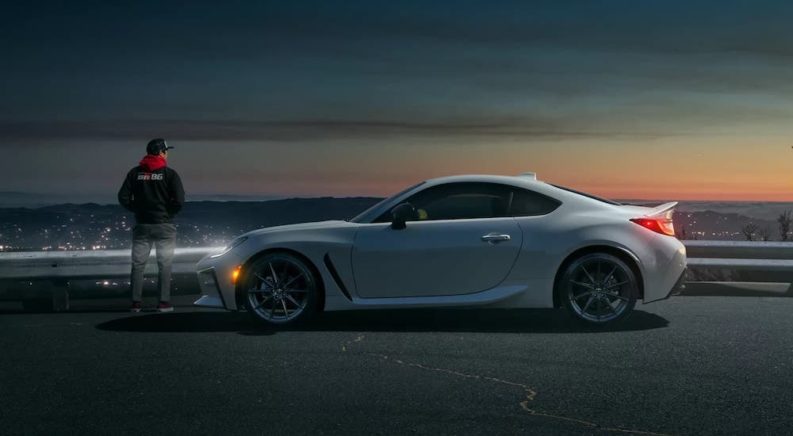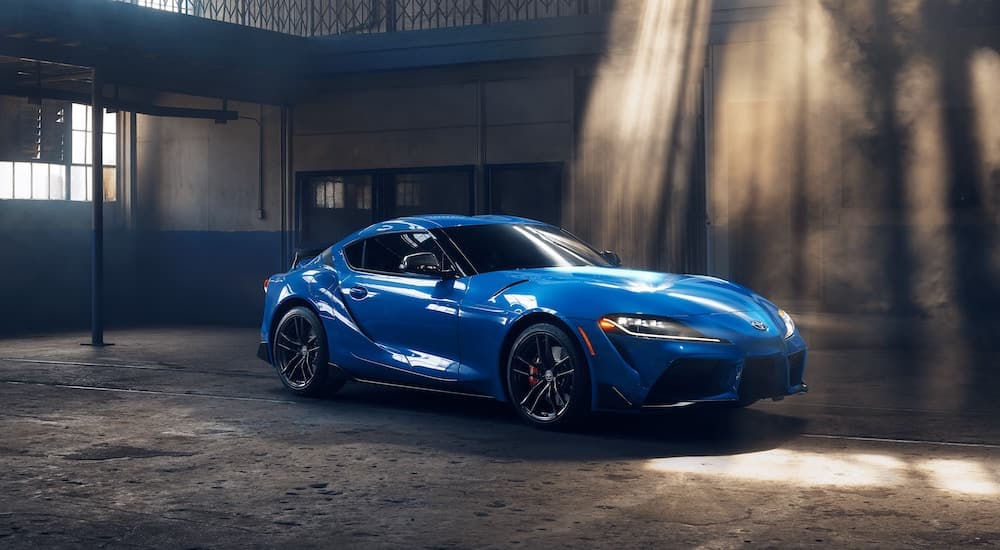Do you believe the future is predictable? In 2016, a research group called McKinsey & Company predicted the automotive industry would face a significant revolution by 2030, shifting transportation toward mobility, connectivity, and feature-rich upgrades. While the study also anticipated more car-sharing in urban areas and the onslaught of fully autonomous vehicles, we’re looking at the future of the automotive industry in a different light.
Today, automakers outfit their newest models with cutting-edge technology, which aligns with the 2016 prediction that cars will become tech-savvy chariots that demand less from us behind the wheel. For now, our involvement is necessary, but semi-autonomous driving technology is ushering us in the right direction. However, there’s an even bigger shift in the industry that’s taking place right now. It’s changing how dealerships do business and how we, as car enthusiasts and consumers, buy cars. So what does that change look like?
Chip Shortages Inspire a Seismic Shift
Global events over the last few years have dramatically impacted the car industry, specifically with chip shortages leaving many dealership lots barren. The manufacturers’ inability to meet that demand has created a frenzy on dealer lots. On top of this, other events have forced dealerships to pivot and reach drivers online via virtual showrooms, giving them access to the models of their dreams from the comfort of their couches or during their lunch breaks at work.
In 2020, Cox Automotive conducted an extensive study on changes in the automotive industry. The study examined the rising demand for cars and its impact on the market, explaining the evolution of the casual buyer to the proactive buyer. For instance, the study found that new car buyers spent less time shopping than ever before. So, what’s the reasoning? With such high demand, they knew the risk of missing out on the vehicle.
This shift from casual shopping made a significant impact on the automotive industry. It’s proven that when buyers think there’s a limited amount of anything, they’re more apt to make a faster or hasty decision. Just the appearance of a limited inventory can inspire drivers to invest now rather than later, especially if they think they’ll be hard-pressed to find another model of the same caliber.
The Impact on Car Enthusiasts
How will these changes impact car enthusiasts? Answering that starts by defining who a car enthusiast is and how they differ from a traditional buyer. The average consumer is your typical car buyer or someone looking at your run-of-the-mill model, considering fuel efficiency, safety and connectivity features, and basic amenities. On the other hand, a car enthusiast is looking to build and invest in their dream vehicle, a model that isn’t on a dealership lot and one that’s likely more powerful and better equipped. Consider these two demographics as the difference between an SUV like the Kia Telluride and a custom sports car like the Ford Mustang Shelby GT500.
In this sense, car enthusiasts spend more time shopping because they often make larger investments. What’s on the dealership lot doesn’t play a significant factor in their decision because what they’re looking for is beyond the standard inventory. Instead, they are willing to do more research and custom-build the perfect model to their specifications. They want what no one else has.
As a result, car enthusiasts aren’t affected by this new knee-jerk reaction to the car-buying process caused by the reality or facade of high demand. They’re veterans of shopping online for models, custom building sports cars like the Shelby GT500 on the Ford website, and honing the details until they are 100% satisfied. There’s no rush beyond their excitement to see the vehicle in person and get behind the wheel for the first time. In fact, many argue that custom building is more rewarding because they get to bring their vision to life.
Virtual Showrooms: The Shop Anywhere Generation
One of the biggest lessons we’ve learned over the last few years is the power of change and the power of pivoting. Dedicated professionals who logged 60 hours a week in the office realized they could just as efficiently work from home and get just as much done virtually. Many businesses discovered the same, reducing overhead and office expenses and increasing company morale with employees working from home in their loungewear and with a constant stream of caffeine.
For dealerships, pivoting has ushered the age-old car-buying process into a modern and digital era. As more consumers turn to technology to navigate the busy demands of their lives (here’s to you Alexa, Amazon, and Google), dealerships are actively working to find their place in the virtual realm. But is it possible? It is.
We see it’s possible as more dealerships transition to virtual showrooms that give customers the freedom to shop wherever they are. Buying a car is suddenly as easy as ordering groceries from an app on your phone. Additionally, this virtual showroom has done something remarkable for many dealerships by allowing them to expand their inventories nationwide to give customers more options. With the promise of delivery, dealerships can grow their stock without the overhead of maintaining and insuring the vehicles on their own lots.
Realistically, virtual showrooms aren’t of much interest to the car enthusiast looking for a custom model with the latest features and technology. However, car enthusiasts aren’t always looking for that new car smell. Instead, some enthusiasts are looking for a classic, a hidden gem they might find in a dealer’s virtual showroom. In this case, the virtual showroom is a treasure trove of possibilities.
Static Pricing: A Fond Farewell to Haggling
For many, the car-buying process is defined by a fast-talking salesperson with plenty of gimmicks and tricks up their sleeve. The high-pressure sales environment is enough to cause even the most composed buyer stress, but the good news is that change is on the horizon. Is it too good to be true? Yes and no.
Between chip shortages and rising demand, automakers struggled to keep up, which led to limited inventory on dealership lots. Your everyday car buyer looking for a family-friendly SUV or reliable workhorse was desperate for a vehicle, so they didn’t even attempt to haggle over a fair price once they found the perfect model. They were simply happy they found a vehicle in the first place.
What does this do for the industry? While this knee-jerk reaction minimizes the need to hassle, it shows that consumers are willing to pay more if they think inventory is low. Finding the perfect vehicle is as enticing as the last donut left on the counter in the morning; it’s calling your name, and you can’t resist. Unlike the donut, however, this non-negotiable approach is bittersweet.
Yes, it tells dealerships that buyers are willing to pay more, but it also shows automakers that they can cut out the middle man. At a dealership, you can haggle over price and extras like paint and upholstery protection, which has nothing to do with the manufacturer but can dramatically impact your final purchase price on the dealer’s lot. This haggling will likely become a distant memory in the future as dealerships rely on the manufacturer’s suggested retail price or MSRP, eliminating additional markups that plague the industry today.
The Future of the Car Industry for Car Enthusiasts
While the automotive industry experiences dramatic changes, dealerships navigate a new digital realm to satiate the growing needs of customers while building brand loyalty. However, this isn’t anything new for car enthusiasts. Just ask a die-hard Ford fan who dreams of building a Mustang Shelby GT500, a driver so enamored by the build process that she spends hours tweaking the model until it’s perfect to her standards. Those hours are spent on the Ford website, using custom build tools that offer a realm of possibility at her fingertips. This virtual revolution in the automotive industry is nothing new.
Just as car enthusiasts rely on custom build tools, they also approach the buying process differently, meaning a haggle-free process is nothing new to them. They aren’t simply buying a vehicle; they’re investing in it. They know what they’re getting and are happy to reach into their deep pockets to get precisely what they want. You can’t negotiate that.
So, how will these changes impact your experience in the automotive industry? As a car enthusiast, we imagine you’ll find much of the same experience. After all, you already know the patience required between the moment you finalize your custom build and the time it arrives at your door.






